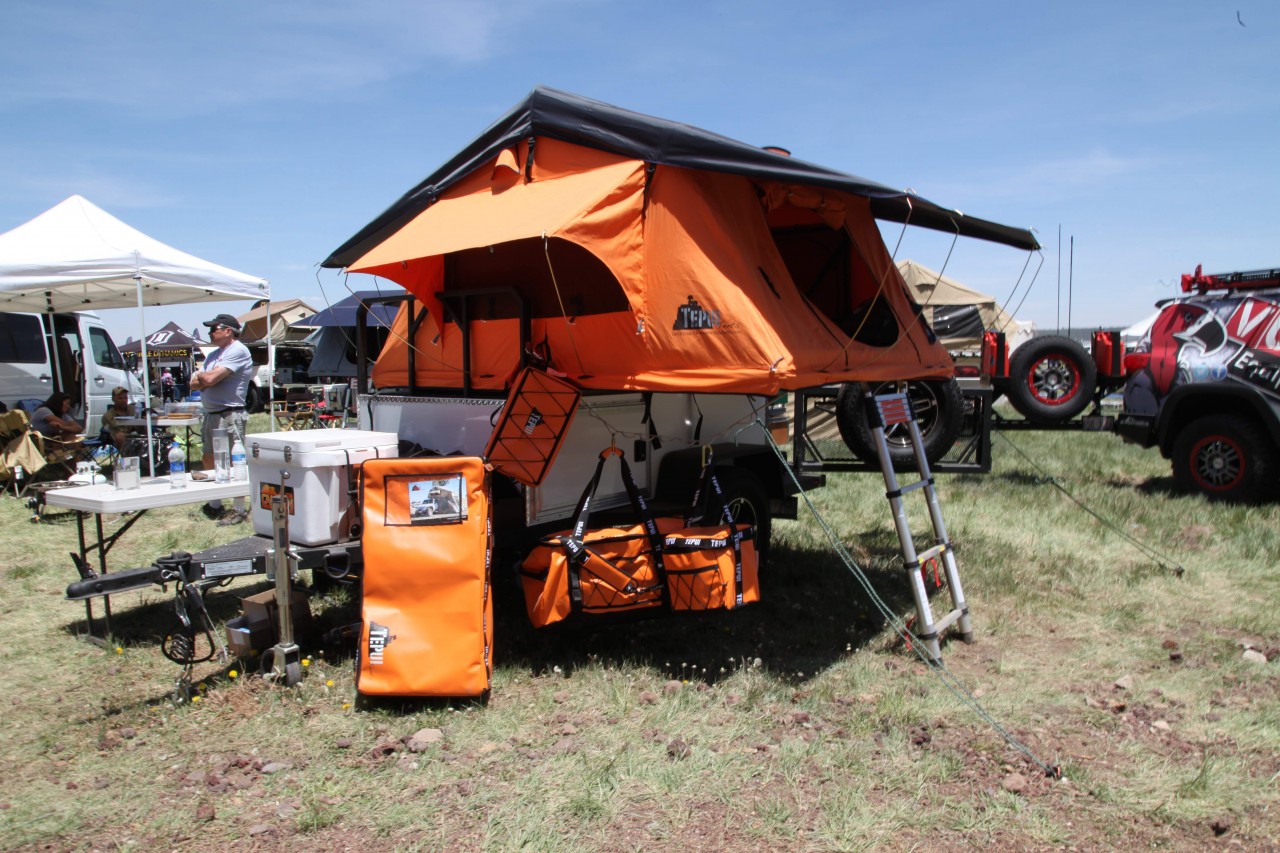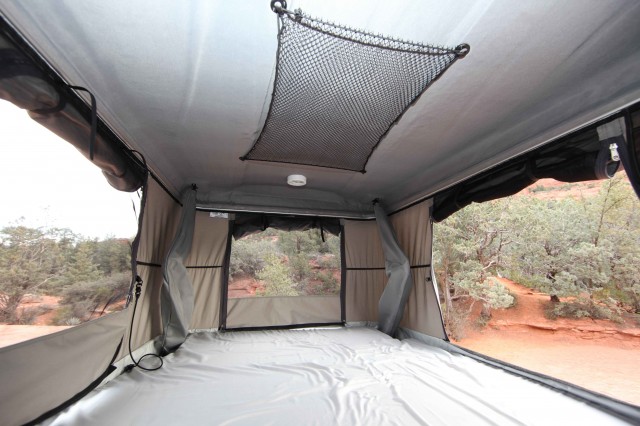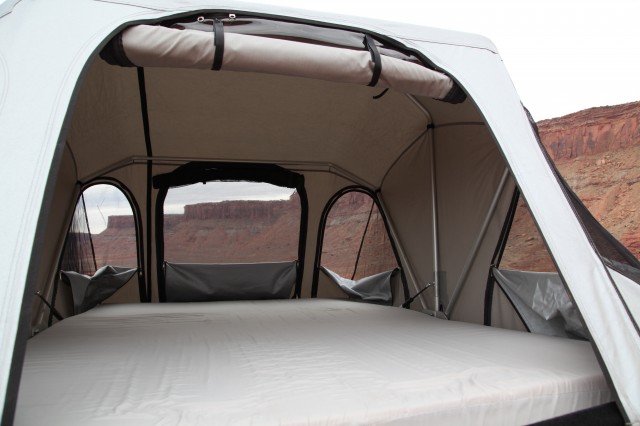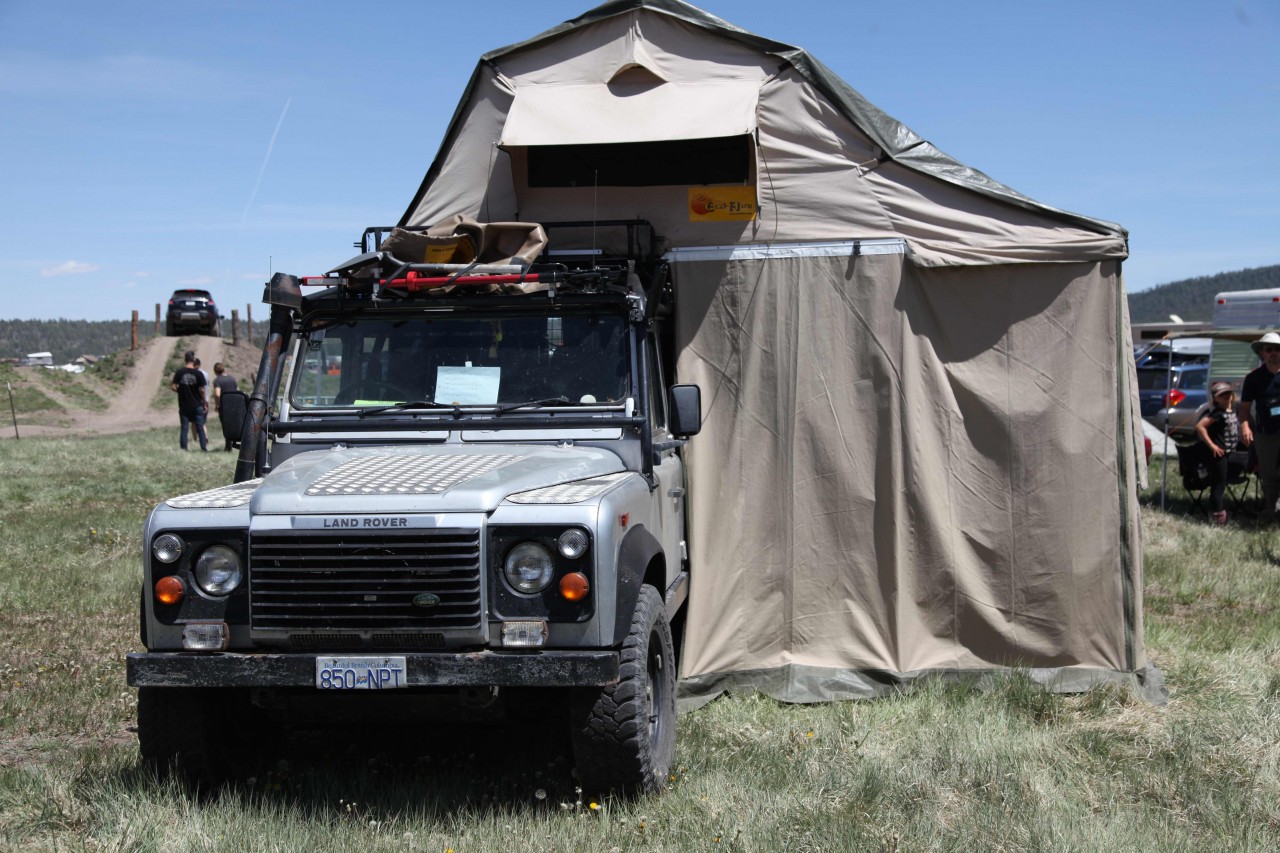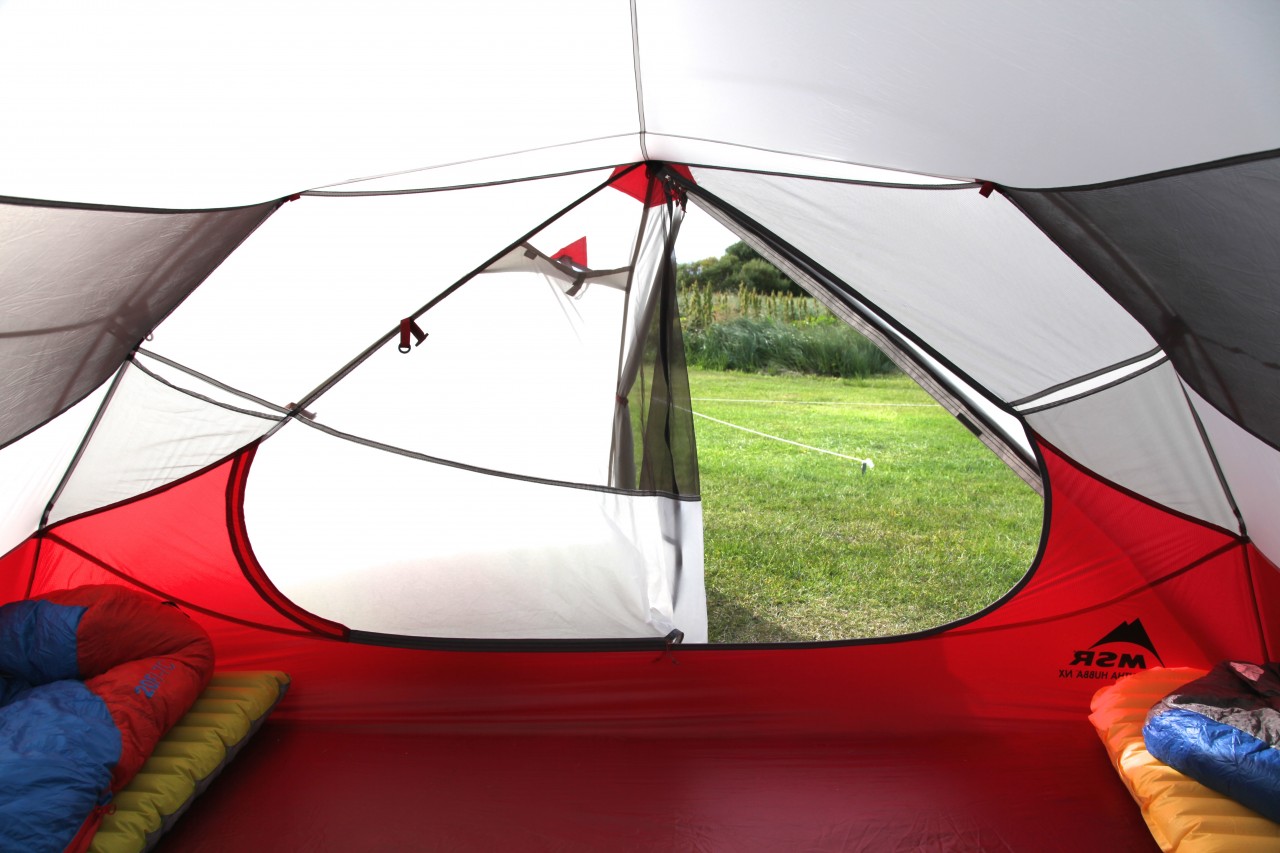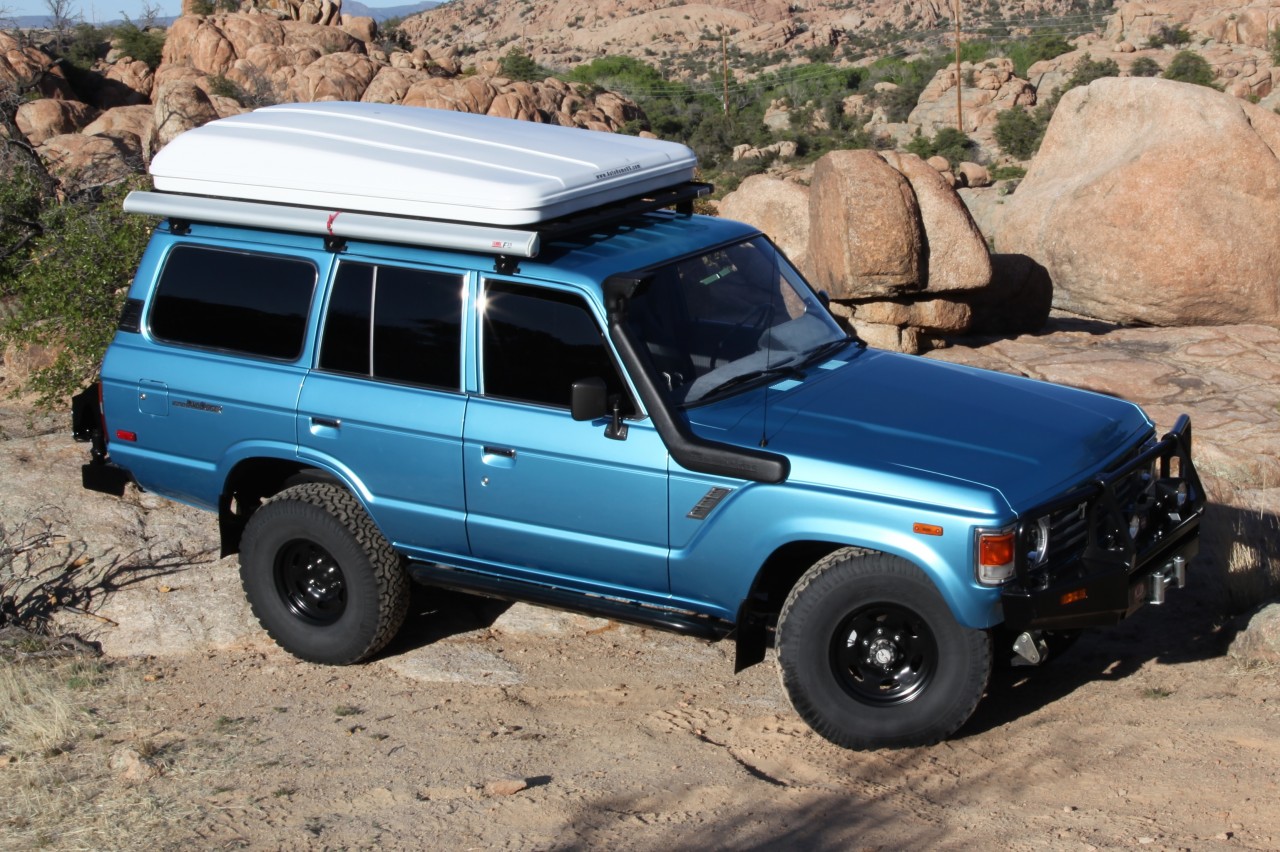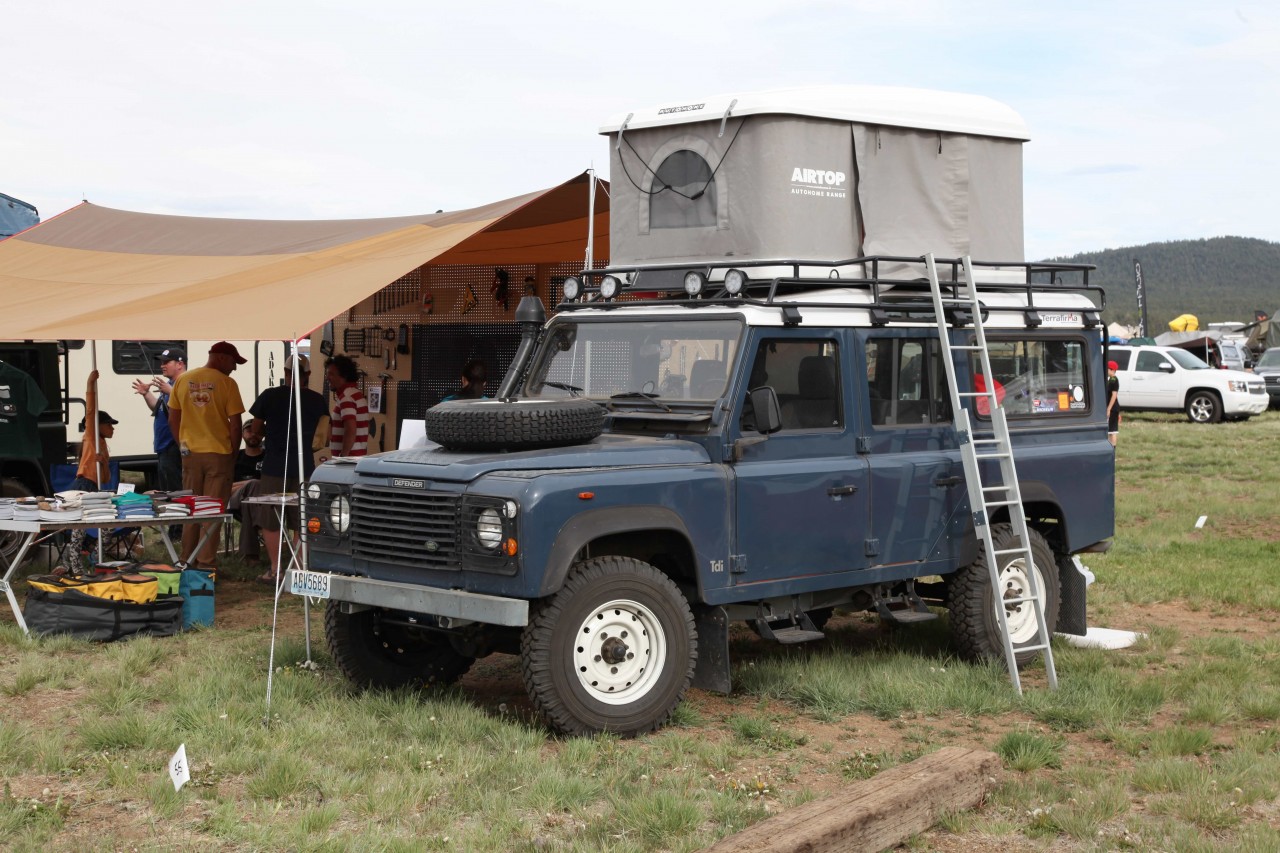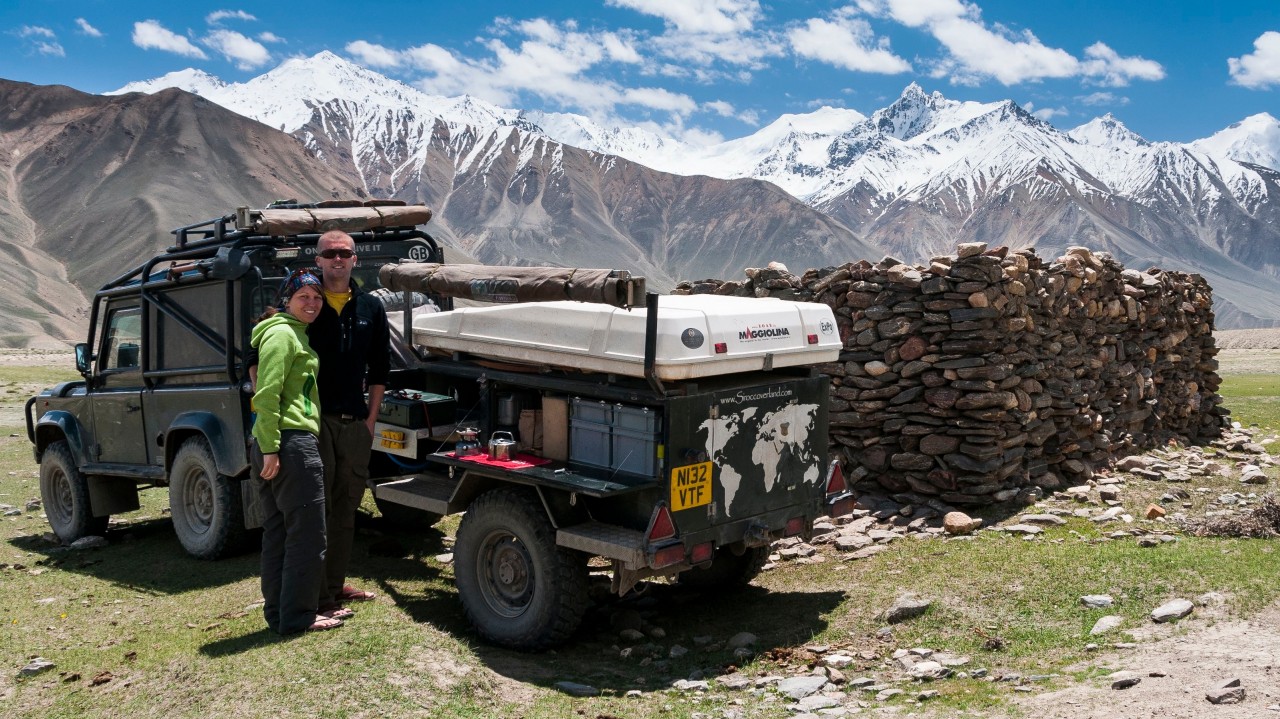Roof top or ground tent, which is better? It is a question oft asked and one that invariably draws out the advocates for both sides. While the arguments for and against are compelling, there really isn’t a definitive answer, so we decided to compile a list of pros and cons…

Site Selection (Advantage RTT)
This might be one of the more compelling reasons to go with an RTT as selecting an ideal spot for RTT set up only requires a level place to park. This has tremendous advantages in terrain where the ground is rocky, lumpy, vegetated, muddy, or otherwise less desirable for ground sleeping. Ground tents require far more attention to site selection, and as we all know, that search can be lengthy and tedious. Ground tents also require stake-outs to defend against wind and weather and not all ground cooperates with the use of stakes.
Hard earth is no place for the ground tent.
Set Up (Advantage RTT)
Here again, the RTT has a distinct advantage over the ground tent. While many ground tents can be pitched in short order, and conceding to the fact some RTTs take considerable time to set up, the general speed advantage usually goes to the RTT. For one thing, ground tents also require the use of sleeping pads which add to the overall set up of the ground tent. An RTT is sleep-ready as soon as it is unfolded. It is worth pointing out that some RTTs really do take a lot of time to set up, especially on taller vehicles. Some also require a significant amount of physical effort to deploy. Chose your RTT carefully and it can best the set up ease of any ground tent.
Tepui tents have opened the door for more value-based tents, some with extreme durability.
Comfort (Advantage – Wash, maybe an edge to the ground tent)
This is a tough one as comfort is subjective. Most RTTs offer superb sleeping comfort right out of the box, but may require some customization of the pad to get things dialed in perfectly. Ground tent comfort is largely a measure of size, features, and the sleeping pads used. Either system can provide ample comfort.
Weatherproofness (Advantage – Wash)
The quality and design of any tent has everything to do with its weatherproofness. Just as ground tents can provide excellent protection from the elements, so too can some RTTs. All James Baroud tents are tested to wind speeds up to 70 mph, just as an example. The same can be said for some, but not all, ground tents. If weather resilience is of paramount importance, either system can endure the worst if you make your selection carefully.

As an aside, some people like the fact that an RTT allows the users to get up off the wet, muddy, or otherwise unpleasant ground when foul weather strikes. On the flip side, if you’re going to be tent-bound for hours, if not days on end, retiring to a large tent where you can stand and maybe even walk around––is highly desirable.
Liveable Space (Advantage – Ground)
Here is where the ground tent starts to excel. While there are some larger RTTs available, none of them rival the livable space attainable with a ground tent. The average RTT offers the same livable space as a rather small 2-person ground tent. Ground tents can be large enough to accommodate 4-6 people, or more, and tall enough to stand within. It’s easy to set up a livable quarters in a ground tent complete with chairs, cots, and other creature comforts. An RTT on the other hand is primarily just a sleeping quarters. The ground tent also has the advantage of being at ground level with no need to ascend a narrow ladder, thus adding to the convenience of the tent. This is a weighty consideration if like many, your nights include sorties into the woods when nature calls.
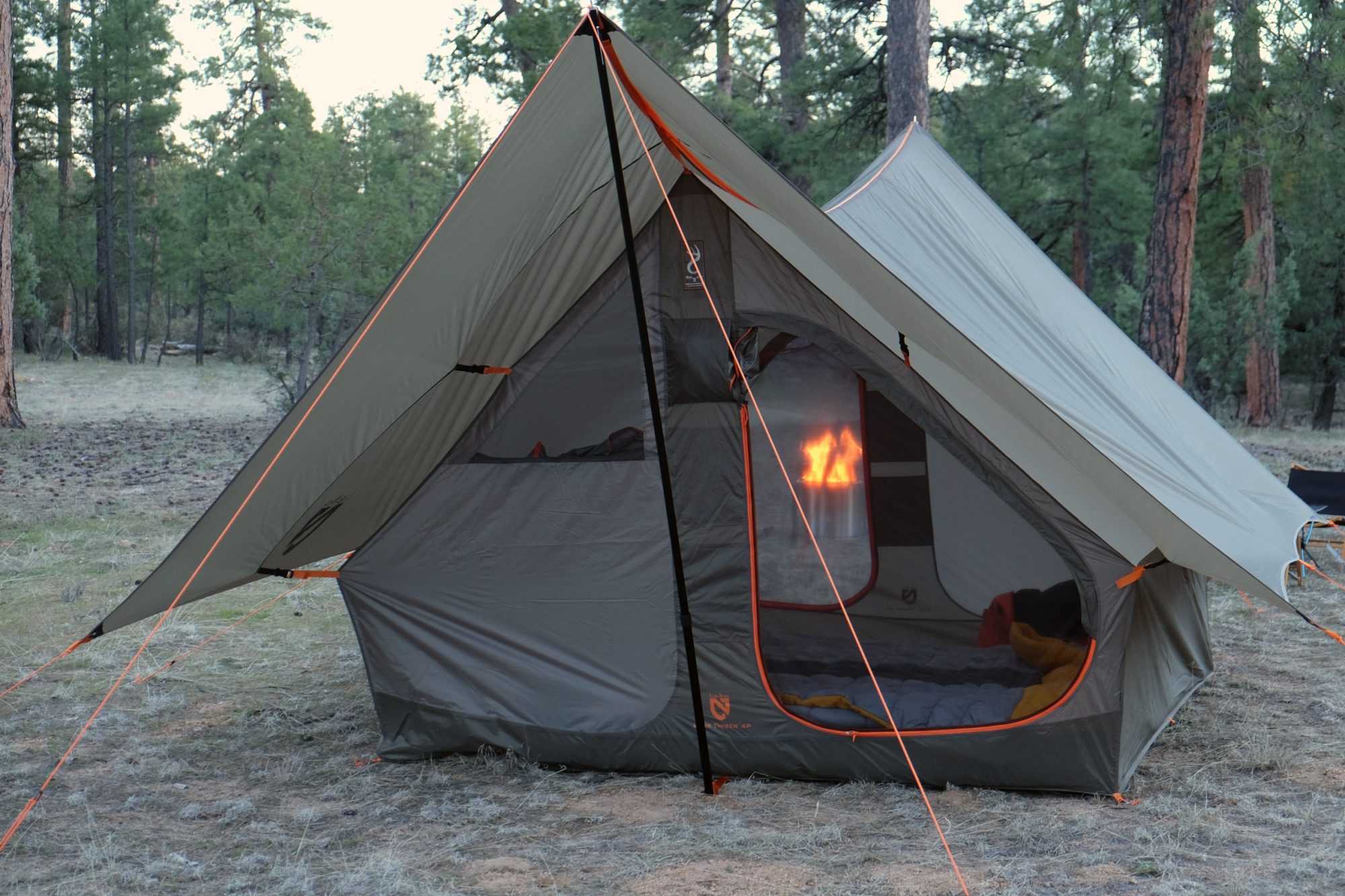
Nemo’s new Dark Timber creates a virtual mini-house in the woods.
There is a way to make an RTT more livable, and that is with the addition of a ground-level room enclosure. While they make for a convenient place to sit, cook, eat, escape bugs, or simply provide for some privacy, they greatly degrade the set up advantage of the RTT. Most room enclosures take considerable time to deploy, often as much time as pitching a standard ground tent. They also add to the bulk and weight of an RTT.
For extended travel with an RTT, the room enclosure is nice to have, even if it requires additional set up time.
Packed size (Advantage – Ground)
With the average RTT clocking in at 120 pounds and roughly the size of a queen mattress chopped in half, the ground tent is clearly the best option if space and weight are of critical concern. Even the largest and most elaborate ground tents seldom push beyond 20-30 pounds, with most well below that mark. A good ground tent suitable for 2-4 people can weigh as little as 4-8 pounds and fit in a bundle barely larger than a small handbag. If there is a concession to be made with the RTT, it is with size and weight. On the plus side, the RTT does free up space inside the vehicle, space otherwise consumed by a ground tent and sleeping pads.
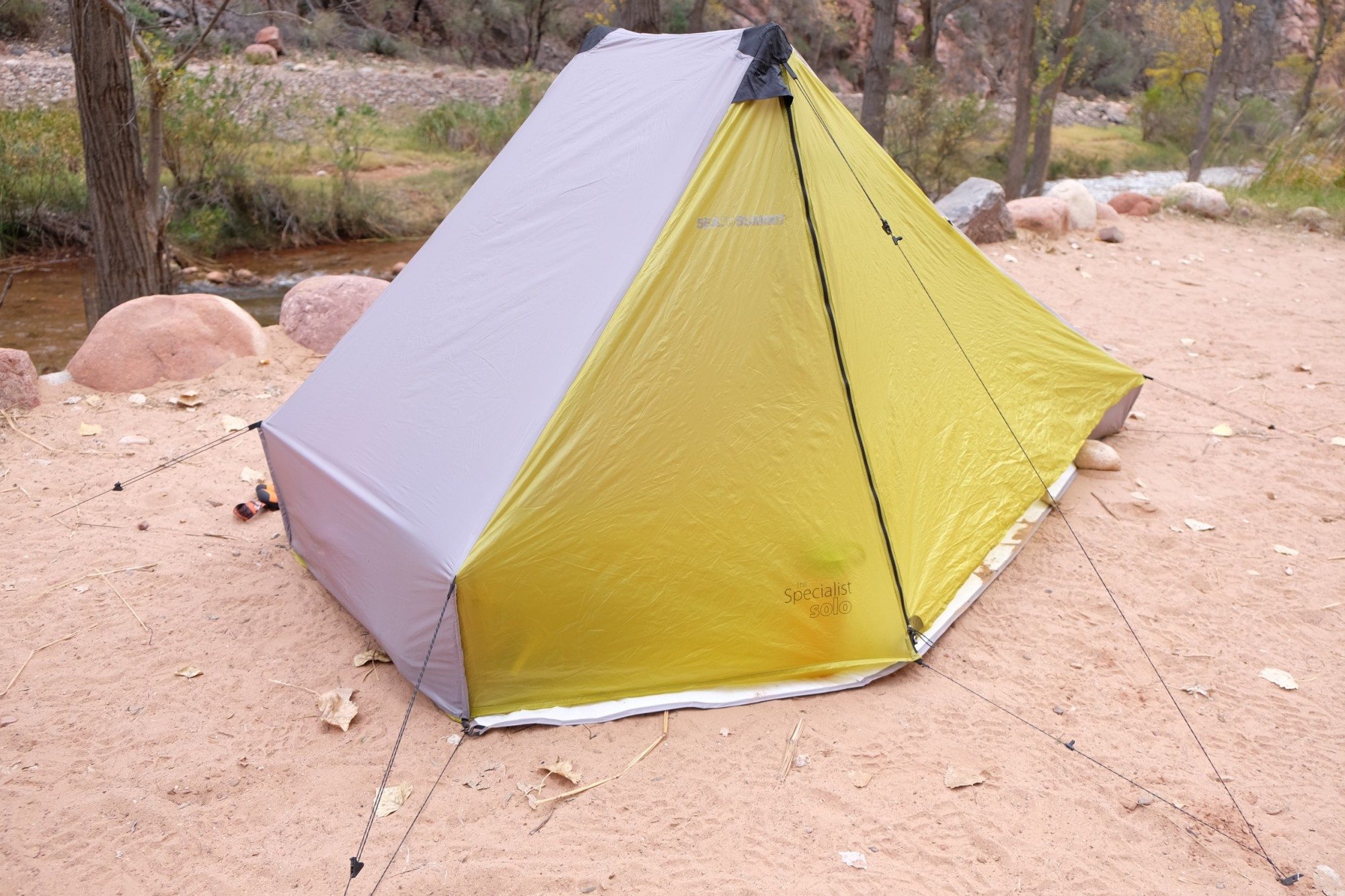
This Sea to Summit Specialist Solo tent packs down to a bundle smaller than a water bottle.
Price (Advantage – Ground)
If we limit this to the price of entry, the ground tent wins again. Although RTT prices have come down considerably over the last many years, entry into ground tent sleeping can be attainted for as little as $100. Most entry level RTTs will start well above the $750 mark. The very best ground tents top out at $1,000 to $1,500, but the upper echelon RTTs can quickly push beyond $2,500, if not more. The ground tent is simply less expensive no matter how you slice it.
The MSR Mutha Hubba has ample room for three adults but weighs less than 6 pounds and packs down to a very small bundle.
Versatility (Advantage – Ground)
It would be hard not to give the versatility nod to the ground tent. The most notable advantage is the ability to quickly and easily move a ground tent from one vehicle to another. Moving an RTT from one vehicle to another invariably takes more than one person and up to 30 minutes to complete, even with speedy hands. The ground tent can also be pitched away from the vehicle if necessary, or desired, and for those who do fly-and-drive trips, can be packed in a duffel for easy travel. Some lightweight ground tents can be used on motorcycles and even on foot to further expand utility.
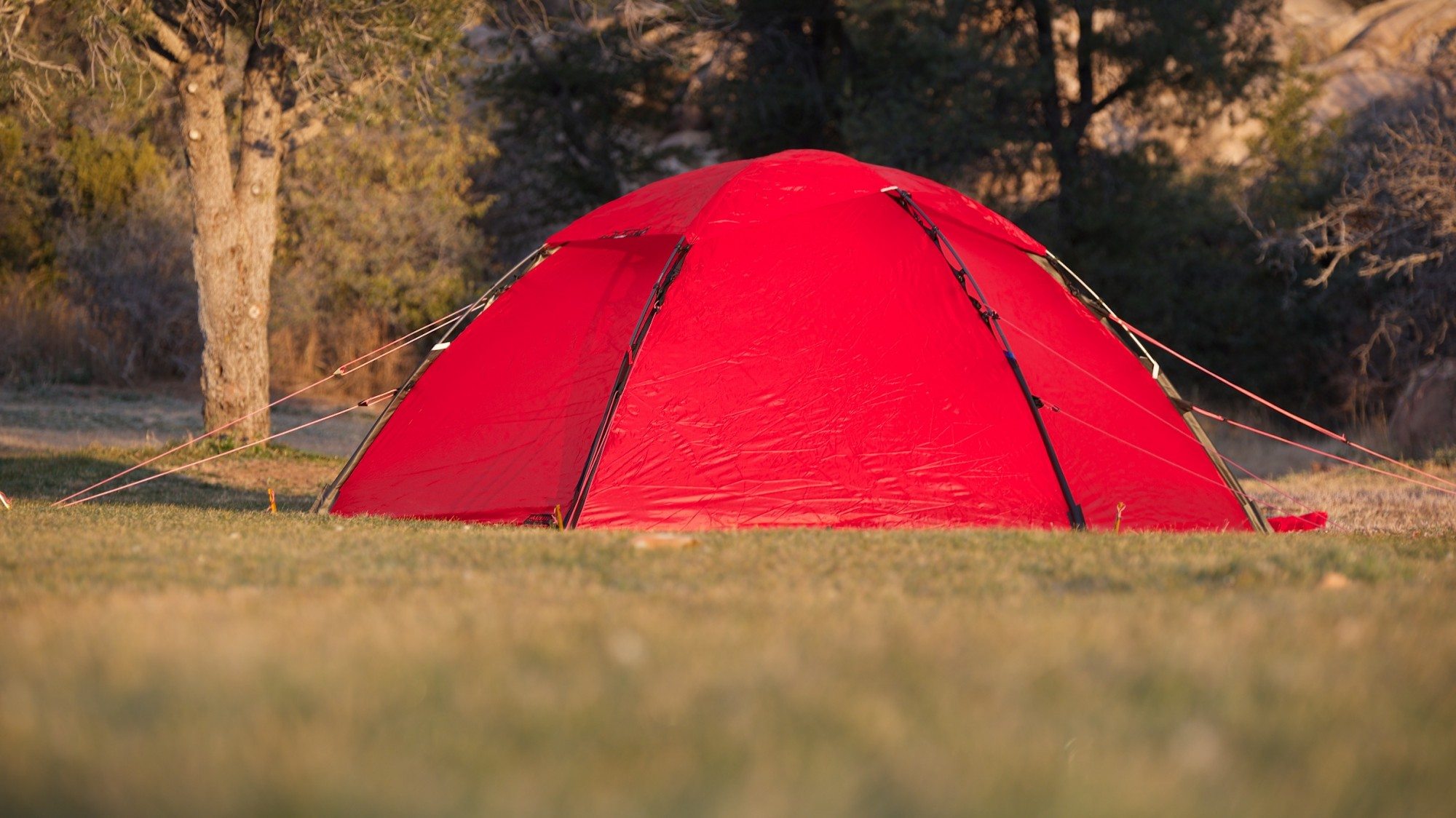
Here’s where the RTT gains a solid strike against it. Once you set up your RTT, and especially after you unfurl your awning and room enclosure, your truck is…stuck. It’s not possible to set up a base camp then drive away. Every time you move, you have to pack up your RTT.
The MSR Mutha Hubba in Iceland was a perfect match with the small Jimny.
Road and Trail efficiency (Advantage – Ground)
Because the typical RTT is rather heavy, and because it is placed so high on the vehicle, it will almost always have an impact on handling and fuel efficiency. How significant those issues are to the end user is dependent on the tent and vehicle combination. It may even be necessary to modify suspension components to best accommodate the added load of a heavy RTT. Such considerations seldom impact the ground tent. Ground tents, being considerably lighter and smaller, have a negligible influence on the vehicle’s road or trail handling qualities.
Although some RTTs are sleek and aerodynamic, even the most slippery RTTs will impact fuel efficiency more than any ground tent stored inside the vehicle. How much of a concern this really is to the end user could be dismissed as inconsequential, or justifiable given the RTTs positive advantages.
For some vehicles, reduced fuel efficiency is a minor concession.
Overlandiness (Advantage – RTT)
This is not just a tongue-in-cheek consideration; there is a degree of practicality to consider with the overlandiness of either tent solution. If your overland vehicle is also your daily driver you may not want to haul an RTT around every day, and popping it on and off is not really a viable option. For that reason alone, some may forego the RTT. If on the other hand, your overland rig is only used for actual overland travels, or perhaps mounted to an off-road trailer, the RTT’s overlandiness might be perfect. And, there’s nothing wrong with liking the aesthetic of an RTT on your vehicle, or, disliking it for that matter.
Hard shell tents like those from Autohome have long been favored by those traveling for extended periods of time.
Conclusions
For the traditional overlander prone to move every day, the RTT has undeniable advantages due to the speed and ease of set up and break down. Then there is the obvious benefit of being further distanced from the toothy creatures that might disturb your slumber. The ground tent’s versatility, more approachable pricing, and large living space make it desirable. The small packed size and low weight often seal the deal for the ground tent. If you commonly travel with three or more occupants in your vehicle, the larger size options for ground tents, or the ability to carry multiple tents, might be ideal.
There is no winner in this head to head as every end user will have unique criteria that will influence their own decision to either sleep on the roof or the ground. Then there is the other set, those who use…both.
While it seems on paper that there are more advantages to a ground tent, the more compelling advantages often belong to the roof top tent, particularly for some travelers and the vehicles they drive. Although an RTT might be expensive, heavy, big, and cumbersome, the ease of set up might be all the justification needed to make it the sleeper of choice.
So, what do you use and why?





